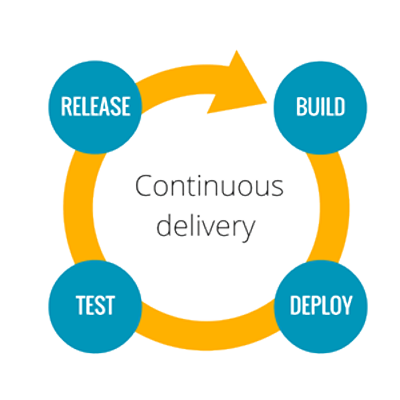DevOps As A Service
To enable that culture in your organization you need tools, education , motivation and hand to hand help to your team , We Tek Yantra team will help your organization to achieve the best in class development/delivery pipeline. We will integrate your delivery systems, creating and maintaining a fully automated solution that enables you to focus on building a continuously improving organization.
One key DevOps best practices is instrumenting a Continuous integration and Continuous Delivery pipeline that automates the process of building software, packaging applications, deploying them to target environments, and instrumenting service calls to enable the application. This automation requires scripting individual procedures and orchestrating the steps from code check-in to running application. Once matured, devops teams use the automation to drive process change and strive to do smaller, more frequent deployments that deliver new functionality to users and improve quality.


Continuous Integration
Continuous Integration is a software development practice in which you build and unit-test software every time a developer checks in new code. This provides Agile software teams the rapid feedback they need to respond to market demands and eliminate problems quickly.
Continuous Delivery
Continuous Deployment is a software development practice in which every code change goes through the entire pipeline and is put into production, automatically, resulting in many production deployments every day. With Continuous Delivery your software is always release-ready, yet the timing of when to push it into production is a business decision, and so the final deployment is a manual step. With Continuous Deployment, any updated working version of the application is automatically pushed to production. Continuous Deployment mandates Continuous Delivery, but the opposite is not required.


DevSecOps
DevOps involves integrating development, testing, deployment, and release cycles into a collaborative process. Security is often considered an afterthought; something to be inserted just before release.
Thinking ahead to integrate security throughout the DevOps cycles involves intelligence, situational awareness, and collaboration. This is called DevSecOps.
Continuous Testing
Testing must be automated and integrated into the CI/CD pipeline. In other words, the development teams that target and achieve this goal are implementing continuous testing.
Continuous testing requires teams to have already automated a set of tests that can be plugged into the CI/CD pipeline. Although testing applications is done in most organizations developing software, having a technical practice in place that evaluate risks, prioritizes quality assurance implementations, and automates the most critical application tests requires people, practice, and technology to establish.


Site Reliability Engineering
Site reliability engineering (SRE) empowers software developers to own the ongoing daily operation of their applications in production. The goal is to bridge the gap between the development team that wants to ship things as fast as possible and the operations team that doesn’t want anything to blow up in production.
In many organizations, you could argue that site reliability engineering eliminates much of the IT operations workload related to application monitoring. It shifts the responsibility to be part of the development team itself.